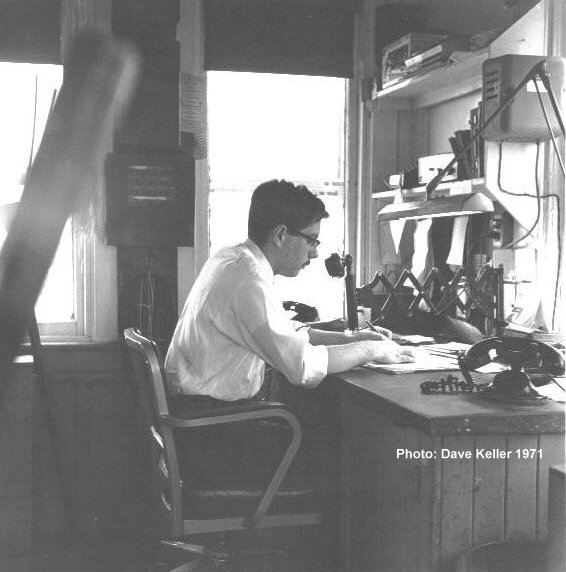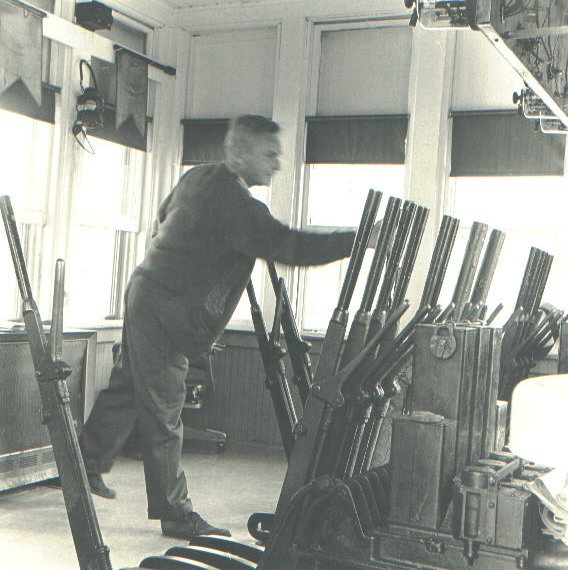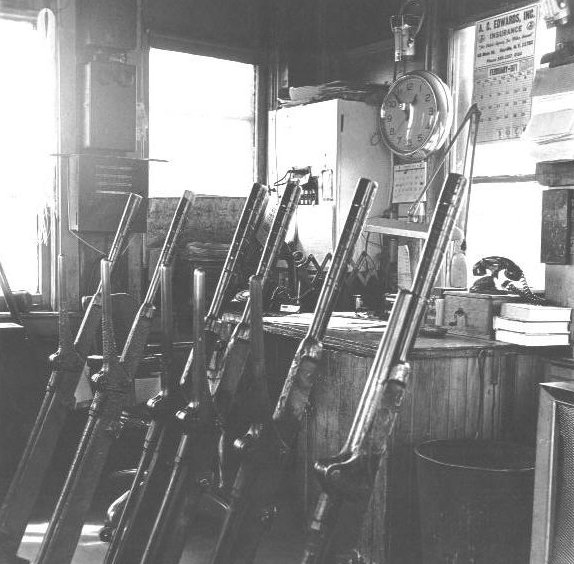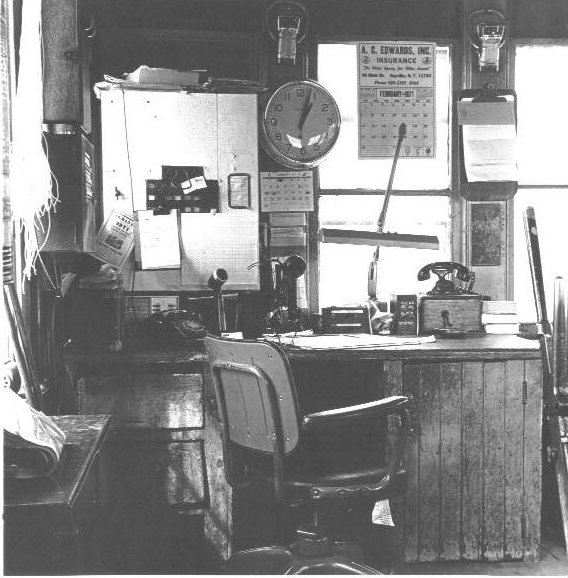Dispatcher's calls, when in L. I City were "X".
When they were moved to Jamaica, I'd have to think they kept the same call.
Also, regarding the phone system . . as late as the mid-1970s (and perhaps later, but I wasn't around) the phone system was the old magneto-crank style. A certain number of rings from a certain number of cranks indicated if the call was for your block station or not.
The block operator's "dispatcher's phone" was the old "flexi-phone" style that pulled out towards the operator or pushed back out of the way when done.
Also, the phones in the old "T" boxes were also the old magneto-crank type.
Here's an example of the "Flexi-Phone." The hand set on the corner of the desk was also a 'crank job." the dial had been removed and the cranking box was behind the phone, out of the photo.

In this shot, you can see the old, wooden bell box at the ceiling level, above the train order lantern and flags at the upper left. This would ring when you had an incoming call:

Here's another view of the handset, sitting atop the crank box. You can see the crankhandle below:

And .. . another view. A "modern" dial phone is visible to the left on the desk!

Dave



